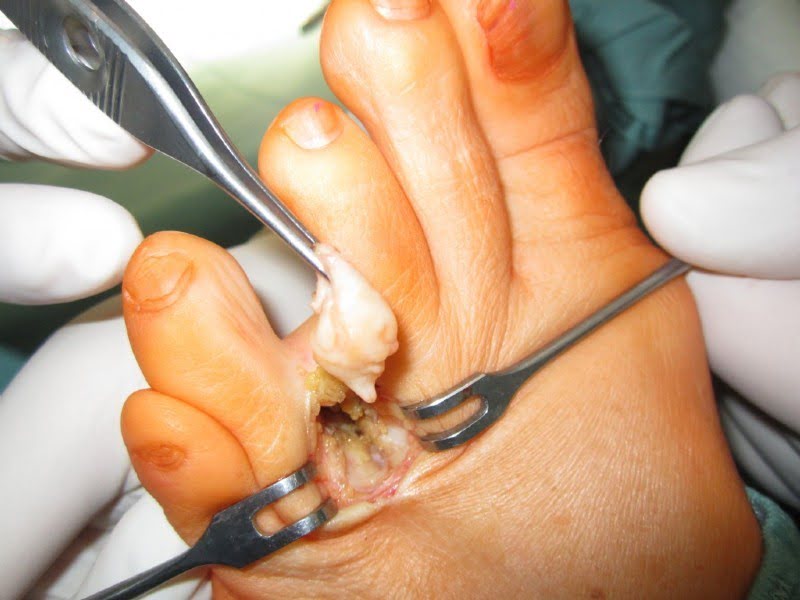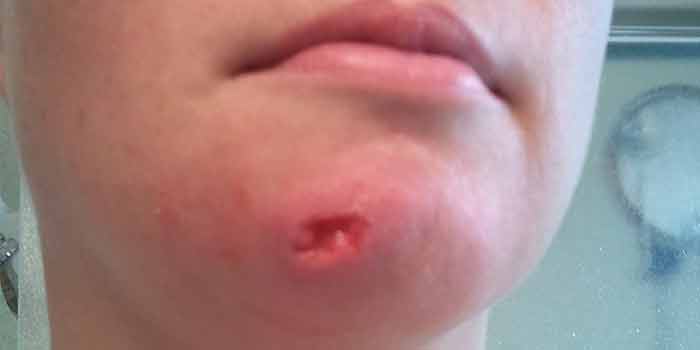The neuroma is a growth which arises in nerve cells while the Morton’s neuroma is a painful condition which is affecting the ball of the foot and most commonly the area between your third and fourth toes are affected. This condition can feel as if you are standing on a pebble in your shoe or on a fold in your sock. This condition involves a thickening of the tissue around one of the nerves which is leading to your toes. It can cause a sharp and burning pain in the ball of the foot. Also your toes may burn, sting or feel numb. People who wear high – heeled shoes are having increased chances of getting Morton’s neuroma [1]. There are many people who experience relief when they switch to lower heeled shoes with wider toe boxes. There are some cases when corticosteroid injections or surgery may be necessary. The Morton’s neuroma is also known as interdigital neuroma or Morton’s metatarsalgia. Morton’s neuroma can happen in one foot or in both feet. Usually, the Morton’s neuroma is affecting the nerve which is between the third and fourth toes but there are some cases when second and third toes are affected. This condition can happen at any age but most commonly it is affecting the middle – aged women. This is because women want to wear high – heeled shoes or wear tight shoes which are putting pressure on their feet. Also runners are having increased chances of getting Morton’s neuroma because their shoes are putting increased pressure on their toes when they are running [2].
Morton’s neuroma symptoms
In the most cases, there are no outward sign of this condition such as lump. You can experience some of the following symptoms:
- Tingling or numbness in your toes
- Frequent urge to take off your shoe and massage your foot
- Feeling like you are walking on a wrinkled or crumpled sock
- Curtailing your activities because of the pain or your pain becoming worse over times
- A burning pain in the ball of your foot that may radiate into your toes
- Feeling of a bilge or fullness between your toes
- The toes closest to the pain starting to spread
- Cramping of the toes or a clicking feeling when you walk
- A feeling as if you are standing on a pebble in your shoe
- Feeling that your toes are asleep
- Worsening pain from applying pressure or wearing shoes
If you have any foot pain which lasts longer than a few days, you need to visit your doctor and not ignore this pain. Also people should visit their doctors, if someone is experiencing a burning pain the ball of his or her foot which is not improving, despite changing his/her footwear and modifying activities which are causing stress to his/her foot. Your doctor can suggest you some natural Morton’s neuroma treatment at home or he will recommend you other treatments. Your doctor may refer you to podiatrist. They will tell you what the best for your feet is.
Morton’s Neuroma causes
This condition is happening when one of the nerves between the toe bones becomes irritated and this is causing it to become thicker. The exact cause for this irritation is not known but it can be caused by the nerve being damaged, stretched or squashed (compressed). The Morton’s neuroma can be linked to:
- Being active and playing sport [2]
- Wearing tight, pointy or high – heeled shoes [1]
- Other foot problems, such as hammer toes, bunions, high arches and flat feet
It is not known if the mentioned conditions directly cause the Morton’s neuroma or they just make the symptoms worse.
Risk factors: Here are some factors which can increase the risk of getting Morton’s neuroma:
- Foot deformities: It is known fact that those people who have flatfeet, high arches, hammertoes and bunions have increased risk of developing Morton’s neuroma. [3,4]
- High heels: When you are wearing high – heeled shoes or shoes which are tight or ill fitting, then they can place extra pressure on your toes and the ball of your foot. [1]
- Certain sports: When people are participating in high – impact athletic activities such as running or jogging, then they can subject their feet to repetitive trauma. Those sports which feature tight shoes, such as rock climbing or snow skiing can put pressure on your toes. [5]
References:
[1] Turner C. High heels to blame for rise in agonising foot condition. In Telegraph. 2014. Retrieved from www.telegraph.co.uk
[2] Balalis K, Topalidou A, Balali C, et al. The treatment of Morton’s neuroma, a significant cause of metatarsalgia for people who exercise. International Journal of Clinical Medicine. 2013;4(01):19-24.
[3] Naraghi R, Bremner A, Slack-Smith L, Bryant A. The relationship between foot posture index, ankle equinus, body mass index and intermetatarsal neuroma. Journal of Foot and Ankle Research. 2016;9:46.
[4] Gougoulias N, Lampridis V, Sakellariou A. Morton’s interdigital neuroma: instructional review. EFORT Open Reviews. 2019;4(1):14–24.
[5] Dorson JR. Unique orthotic strategies for low-volume footwear. Lower Extremity Review. 2017. Retrieved from lermagazine.com/article/unique-orthotic-strategies-for-low-volume-footwear





